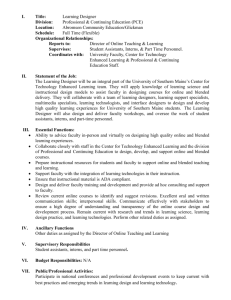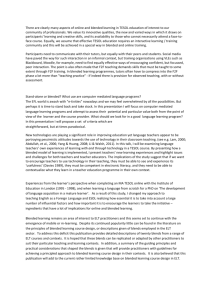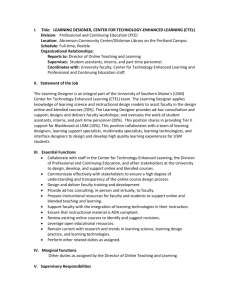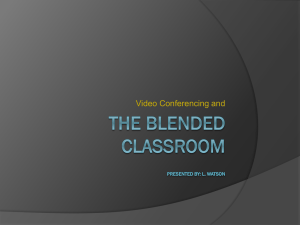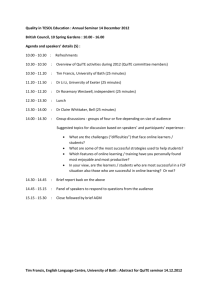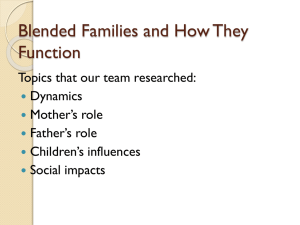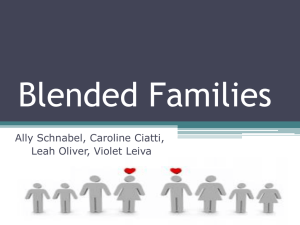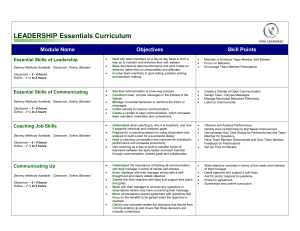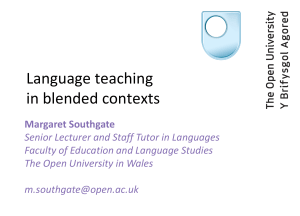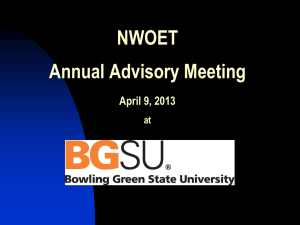Blended learning is…
advertisement
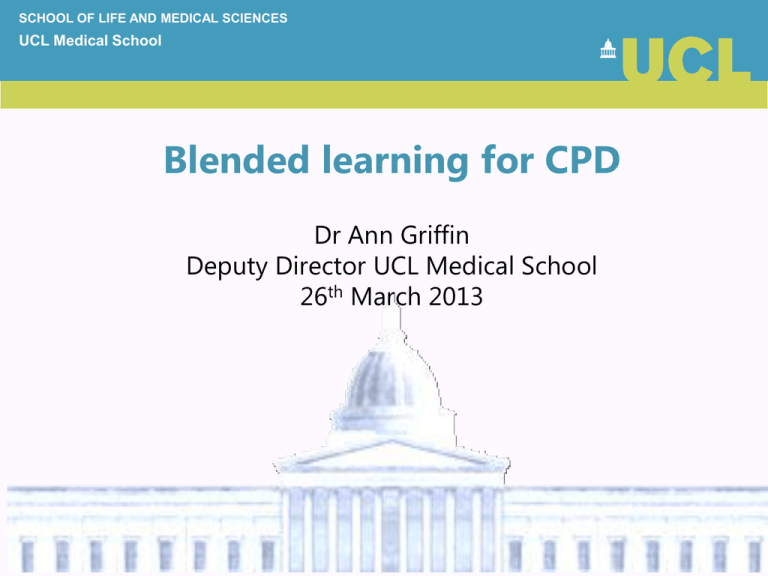
SCHOOL OF LIFE AND MEDICAL SCIENCES UCL Medical School Blended learning for CPD Dr Ann Griffin Deputy Director UCL Medical School 26th March 2013 Aims: • To define blended learning; • To understand its place in continued professional development [CPD]; • To be aware of the critical issues in blended learning; and, • To consider the how we can maximise its capacity to ensure high quality CPD. What is blended learning? • "to combine or mix modes of Web-based technology (e.g., live virtual classroom, self-paced instruction, collaborative learning, streaming video, audio, and text) to accomplish an educational goal." • "to combine various pedagogical approaches (e.g., constructivism, behaviorism, cognitivism) to produce an optimal learning outcome with or without instructional technology." • "to combine any form of instructional technology (e.g., videotape, CD-ROM, Web-based training, film) with face-to-face instructorled training." (Driscoll, 2002) Blended… Teaching methods Teaching contexts Pedagogic approaches Blended learning is… • An integrated approach to teaching and learning that includes multiple modes of instruction and student practice Face2Face On-line ⧬ ⧬ ⟸⧬⟹ Blended Why The goal of blended learning is to provide the most efficient and effective instruction experience by combining delivery modalities. Blended learning aims to join the best of classroom teaching and learning with the best of online teaching and learning Is the future? Income generating Cope with bigger class sizes Task • In pairs or threes think about the pros and cons of blending one of your courses High quality online blends can… • • • • • • • • can save time, effort and cost be an efficient use of resources and teaching spaces are proven to be more effective than single methods of instruction allow sharing with other learners from various regions be adaptable and flexible for teachers and learners and cope with nontraditional learners better - fit in with other commitments be student-centred – learn at own pace, suit individual learning styles, increase autonomy and enable self directed learning use a wide range of educational activities [online webinars, video, chat rooms and discussion boards etc.], and increasing popular as growing ease of use and familiarity with IT. be good for social networking Poor quality blends… • are just another way of providing information and a triumph of form over substance • may result form a lack of IT support or know how for teachers • can be a complex job to bring the right blends together, involve more work and planning • students unfamiliar and unable to make the most out of the experience • learning methods that don’t fit the course objectives Considerations for blended learning • • • • • • What are you trying to teach? How will your students learn? What background knowledge will they need? What opportunities do they need to practise? How will they get feedback? What opportunities are there to extend their learning? • How will it relate to their work? Process • To design blended training, the instructional designers start by analyzing the training or course objectives and braking them down into the smallest possible units • After the course or training has been chunked, the best approach to deliver each segment of instruction is identified. In some cases the best approach might be using online learning . • The course is then aggregated by grouping the instruction logically while taking into account the medium of delivery. In this way, one may require a few lessons online and some others live.. Task: Think of the course that you currently deliver F2F • • • • Discuss what elements could be delivered on line How will you still achieve your learning objectives? What are the benefits? What are the costs? Critical issues in blended learning • Pick you blends and remember all your choices • How much F2F? What about its timing? What content? • Create learning environments that promote active student engagement • How are you going to tailoring it to your audience – the pitch, the pace, the expertise, and their experience. • How are you going to encouraging students to learn from each other • How are you going to encourage flexible approaches to learning Practical issues • IT facilities and support – especially if running international modules & work across time zones may require tutor flexibility • M learning – some VLEs functionality is impaired on mobile devices • Institutional usernames and passwords to access VLE and elibraries [? Problematic with some CPD and administrative burden] • Upkeep of VLE – maintaining links etc. • Monitoring student engagement • Requires a similar amount of tutor time Aims: • To define blended learning; • To understand its place in continued professional development [CPD]; • To be aware of the critical issues in blended learning; and, • To consider the how we can maximise its capacity to ensure high quality CPD.


